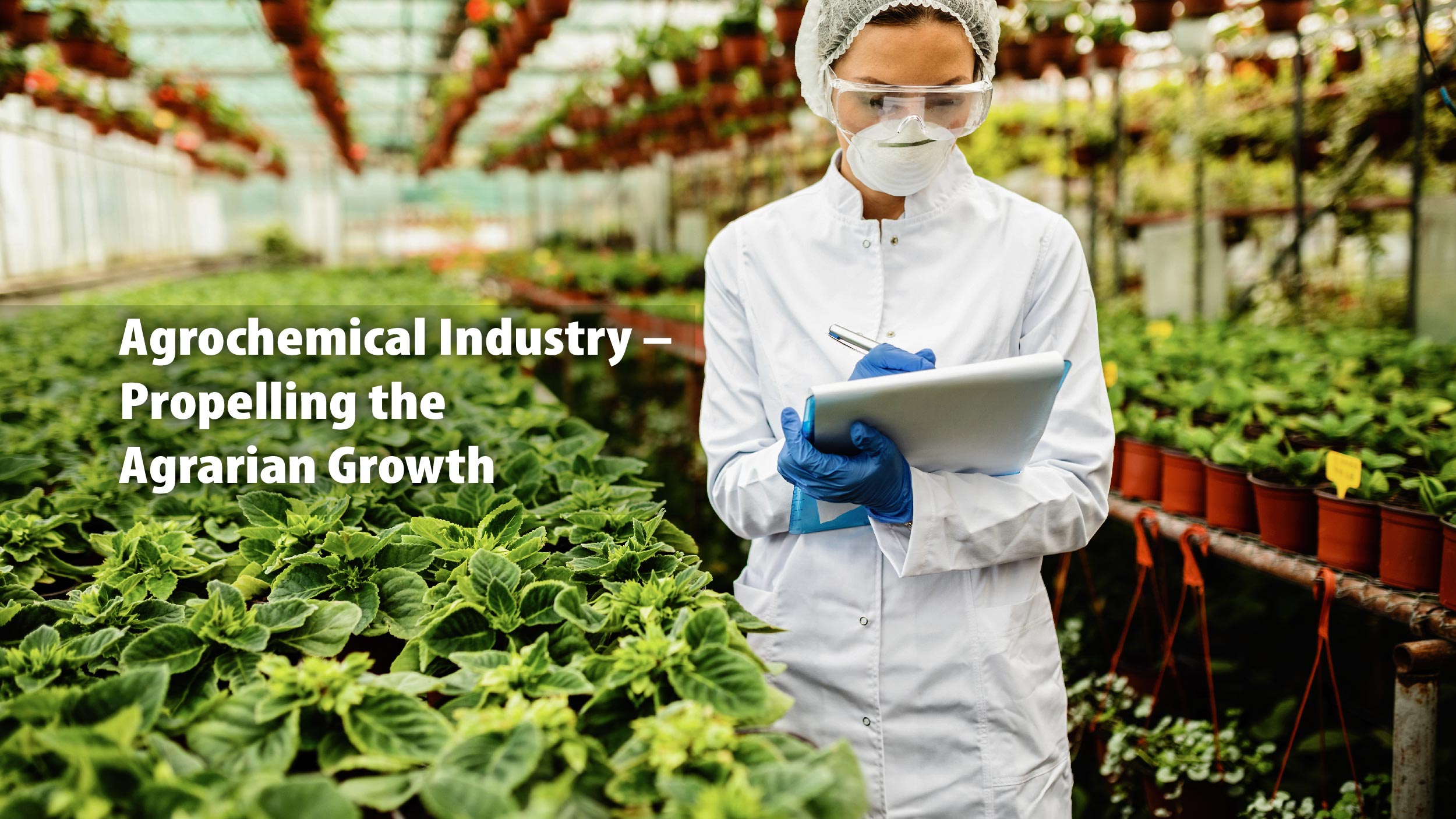Picture this: fields of vibrant crops swaying in the breeze, producing the fruits and vegetables that nourish us every day. Behind this idyllic scene lies a dynamic and essential industry that plays a crucial role in our global food supply chain – the agrochemical industry. It’s not just about fertilizers and pesticides; it’s a world of innovation and science working hand-in-hand with nature.
From agrochemical solutions to the latest in agricultural chemicals, the blog will uncover the secrets behind this dynamic industry. Let’s get started!
What is the Agrochemical Industry?
The agrochemical industry encompasses a diverse range of chemical products designed for use in agriculture. These substances play a pivotal role in modern farming practices, aiming to enhance crop yields, protect plants from pests and diseases, and improve overall agricultural productivity. This industry includes the production and distribution of fertilizers, pesticides, herbicides, insecticides, and other chemical formulations tailored to meet the specific needs of farmers. While agrochemicals have significantly contributed to increased food production, their usage and impact on the environment and human health are subjects of ongoing scrutiny, leading to a growing emphasis on sustainable and eco-friendly alternatives within the agricultural sector.
Types of Agrochemicals
A coordinated effort is underway to actively and responsibly utilize a diverse range of agrochemicals in order to securely manage and regulate the global food supply, ensuring consistently high quality for widespread consumption. These agrochemicals encompass:
- Pesticides: Specially formulated chemicals intended to eliminate insects, as well as other organisms, weeds, and fungi that could potentially harm crop yields.
- Synthetic fertilizers, such as ammonium nitrate (NH4NO3) are designed to promote crop growth by enriching soils with essential nutrients.
- Acidifiers and liming agents: Engineered to adjust the pH levels of soils to best suit the planting requirements of specific crops.
- Soil conditioners, like gypsum (CaSO4·2H2O) are tailored to improve planting conditions in soils with high sodium (Na) content.
- Growth hormones: Synthetic chemicals created to enhance growth rates in both animals and crops.
Innovative agrochemical techniques on the horizon include the development of crops engineered to be resistant to herbicides, as well as those capable of producing their own insecticides.
Agrochemical Industry – Propelling the Agrarian Growth

The agrochemical industry is a vast field that deals with the manufacture and distribution of pesticides and fertilizers in order to increase crop yields. Despite persistent challenges, the agrochemicals market appears to be on the rise, owing largely to rising demand for products that reduce crop losses and increase yields.
Since the beginning of the year, there has been an increase in opportunities to accelerate transformations in the food and agrochemical sectors in order to build resilience in the face of numerous challenges, including climate change. While the pandemic posed significant challenges for every other business sector, it has largely unaffected the agrochemical industry in the long run.
In 2021, the agrochemical industry saw significant advancements and product developments. Even in difficult times, the adoption of faster and more cost-effective analytical methods has given the sector a significant boost. Despite rising input prices, income has increased dramatically due to higher output prices and higher output volumes. Continuing this trend, producers are all striving to set a standard through transformed methodologies in fertilizers, agrochemicals, and other products.
Trends in Agrochemical Industry
New developments such as integrated pest management (IPM), precision farming, and off-patent products, all of which have the potential to reduce agrochemical revenues, are shaping the agricultural chemicals industry outlook significantly. Long-term developments such as genome editing, food waste management, improvements in animal feed digestibility, declining biofuel demand, and the growing popularity of indoor farming are also causing disruption.
Agrochemical Industry: Where Will the Next Big Breakthrough Happen?

● Rising Food Demand
Given global population growth, the growing need to protect against crop losses and increase yields, rising consumer demand for sustainably produced food, and the role of agrochemicals in combating climate change, the future of agrochemicals appears bright.
The anticipated rise in food demand is projected to range from 59% to 98% by the year 2050.
● Developing Technologies
Genome editing, food waste management, improvements in animal feed digestibility, declining biofuel demand, and the growing popularity of indoor farming will all likely pose challenges to agrochemicals’ long-term growth potential. However, because most agrochemical companies are also seed investors, they can use these novel gene editing techniques to introduce selective genetic modifications that will not affect demand for their leading agrochemical products.
● Expansion and Innovation
Creating differentiation through innovation, expanding geographical presence through Merger and Acquisition (M&A), and capturing additional value through deeper farmer engagement will most likely continue to be key strategic themes in the future. The outlook for the agrochemical industry will remain dependent on strategies for dealing with future disruptions that impact current revenue streams.
Agrochemical companies can also learn from what other chemical companies are doing to potentially shorten the time it takes to commercialize a new product. For example, BASF recently acquired a quantum computing start-up, which could assist it in solving complex problems and shortening the product introduction lead time.
● Strategies Developing Growth
Large agrochemical firms have undergone significant portfolio optimization and consolidation through M&A in recent years. Apart from expanding the current product portfolio, many of these M&A transactions have sought to expand the acquirer companies’ geographical presence, particularly in markets where these companies did not have a strong distributor network.
While M&A can be an effective tool for acquiring a new product line (as in the case of BASF, which acquired Bayer CropScience’s seeds business), developing and scaling external partnerships or collaborations can be critical. Major agrochemical producers have already transitioned from being simple suppliers of farm inputs to complex providers of integrated product offerings, with digital as a key component.
The narrative may shift to “doing more with less” as the arable land deficit grows and agricultural practices become more efficient. Furthermore, with renewed interest in sustainability, farmers, governments, and consumers can expect a more diverse mix of agricultural practices that can increase the longevity of arable land without irreversibly harming the environment.
Inferring on the Note…
On the surface, the future of the agrochemical industry may appear daunting to established players, but many changes are underway that are likely to completely transform it. A future focused on sustainability, “doing more with less,” and digital technologies may force agrochemical players to reconsider their long-term business plans, leading to lengthy boardroom discussions.
There are no easy solutions to the industry’s challenges, but with growth and opportunity on the horizon, agrochemical companies will have many strategic options to consider as the agricultural chemistry industry’s promising future unfolds.




